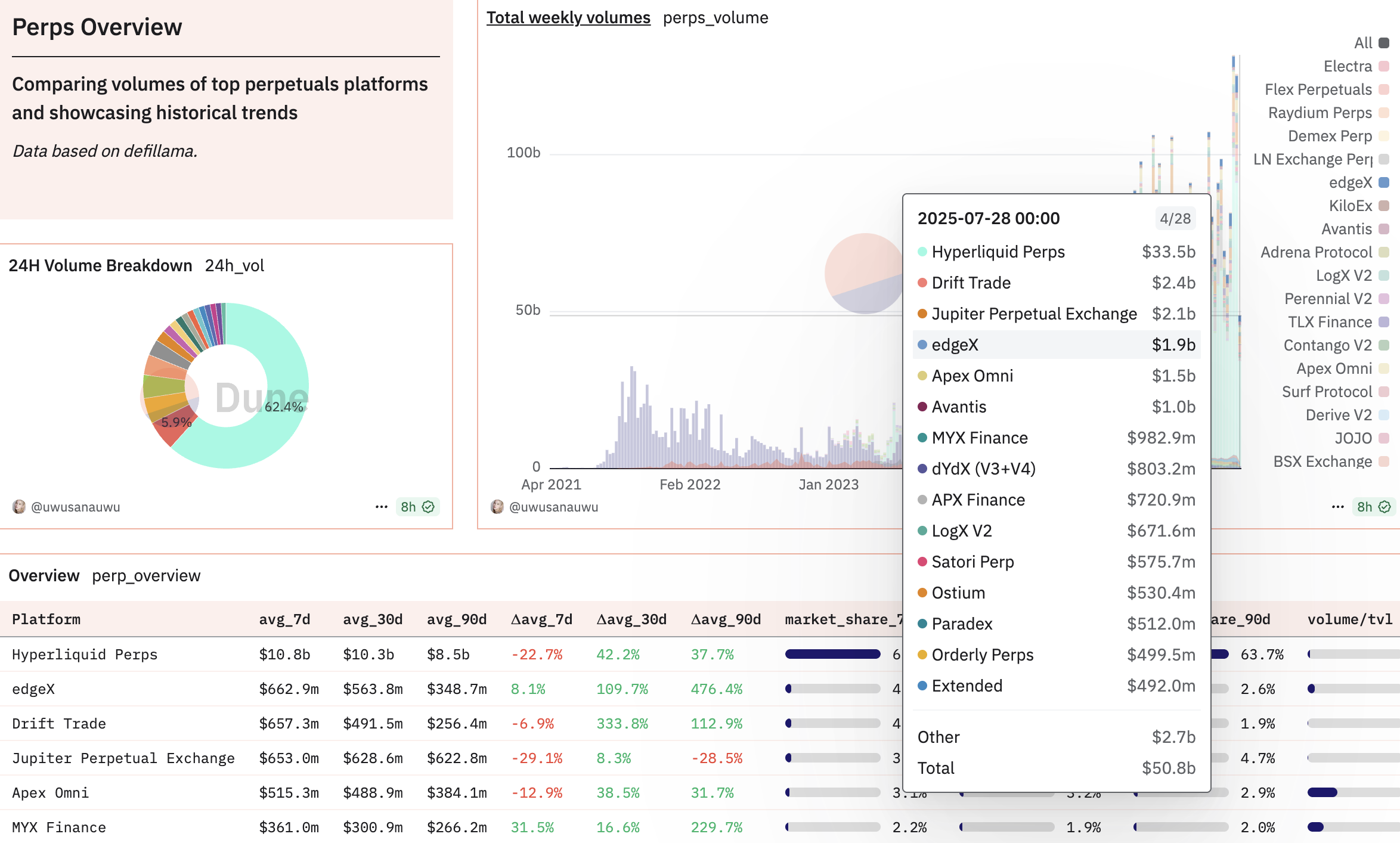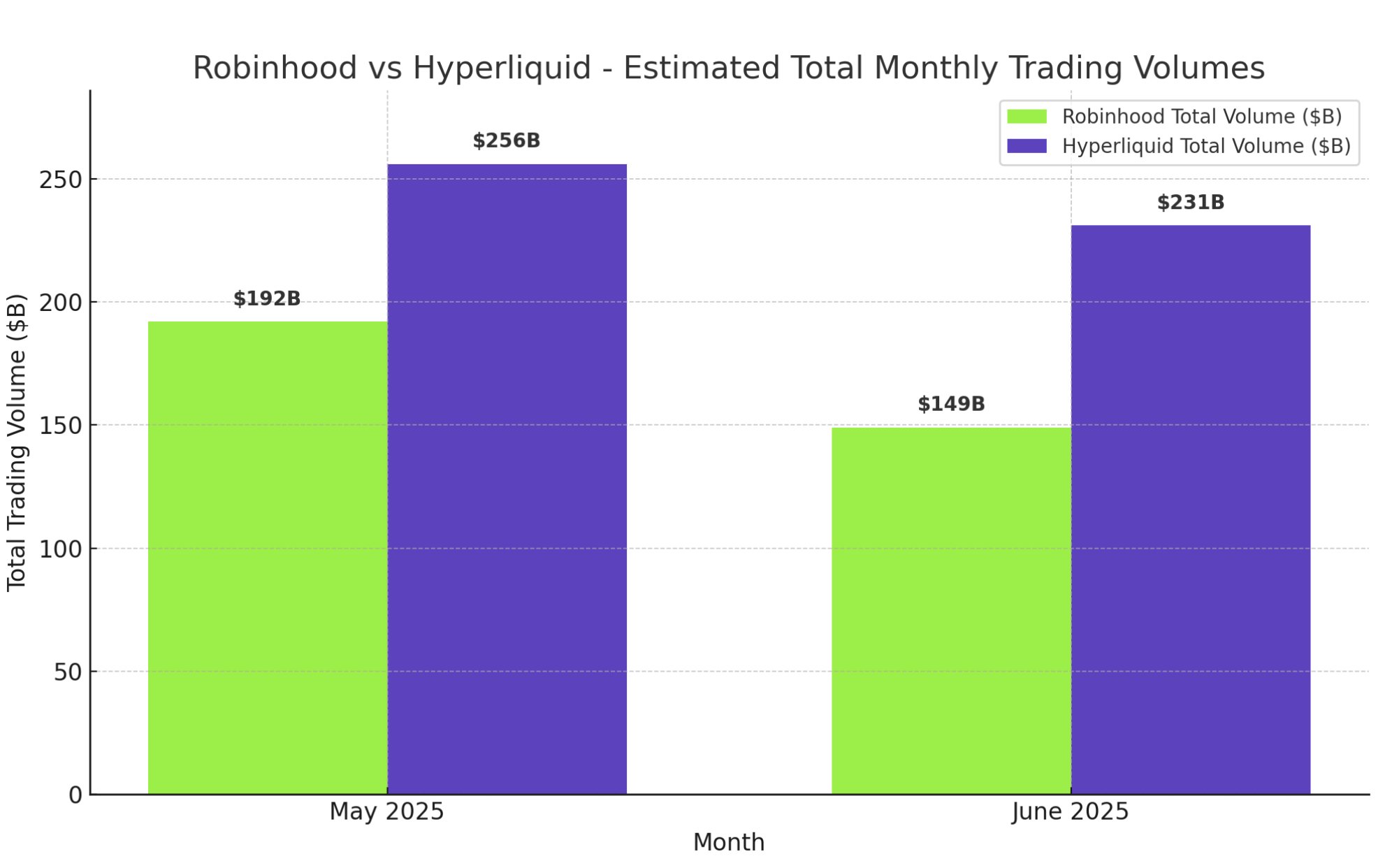How Hyperliquid Is Outmaneuvering Robinhood in the Trading Arena
Hyperliquid isn't just competing—it's rewriting the rulebook. While legacy platforms cling to outdated models, this dark horse is delivering what traders actually want: speed, transparency, and control.
The Silent Disruptor
No flashy Super Bowl ads here. Hyperliquid's growth comes from ruthless efficiency—cutting settlement times in half and bypassing Wall Street's rent-seeking infrastructure. Their secret? Building on-chain what Robinhood still struggles to implement off-chain.
Liquidity Without the Lip Service
Tired of 'free trading' that sells your flow to hedge funds? Hyperliquid's order book depth now rivals centralized giants—without the hidden costs. Robinhood's PFOF model looks increasingly archaic as traders migrate to transparent execution.
The Final Trade
In finance, every revolution starts as a whisper. While Robinhood courts meme-stock day traders, Hyperliquid's building the infrastructure for the next decade—proving sometimes the best way to win is to change the game entirely. (And let's be honest—anything beats another 'commission-free' brokerage recycling 2008's playbook.)
Centralized Exchanges Beware: Hyperliquid Is Catching Up Fast
While many still believe that decentralized exchanges (DEXs) can’t scale like centralized exchanges (CEXs), Hyperliquid (HYPE) is forcing the entire industry to rethink. This DEX now leads the perpetual futures trading segment, outperforming many big names.

According to June 2025 data, Hyperliquid’s trading volume reached $231 billion, slightly down from $256 billion in May.
Meanwhile, Robinhood saw a sharper decline, from $192 billion to $150 billion in the same period. These figures show that the gap between a young DEX like Hyperliquid and the CEX giants is narrowing.

“Coinbase, Robinhood, Binance need to pay attention. Remember when people said DEXs couldn’t scale? Hyperliquid proves them wrong,” investor Lex Sokolin shared on X.
According to an in-depth analysis by Artemis Analytics, Hyperliquid is seen as a “rising star” of the new growth cycle. This highlights its rapid development and its potential threat to the dominance of traditional centralized exchanges.
“In just 2 years, Hyperliquid is quickly rising to become a similarly sized business as Robinhood,” noted Steven from Yunt Capital.
One of the standout features that sets Hyperliquid apart is its “Liquidity-as-a-Service” approach. According to an investor and DeFi expert, this strategy “increases its valuation and is probably one of the best trades one can take in size for the next few years.”
However, possibly due to its rapid growth, Hyperliquid recently experienced a brief user interface outage. This prevented users from placing, closing, or withdrawing orders, although front-end operations operated normally. Following the incident, Hyperliquid pledged to refund users affected by the short-lived API issue, which impacted trades and positions.
While it’s still too early to say that DEXs will completely replace CEXs, Hyperliquid’s growth is increasingly blurring the lines between the two models. Its stability and steadily increasing trading volume have made Hyperliquid a vivid example of the true potential of decentralized exchanges.

